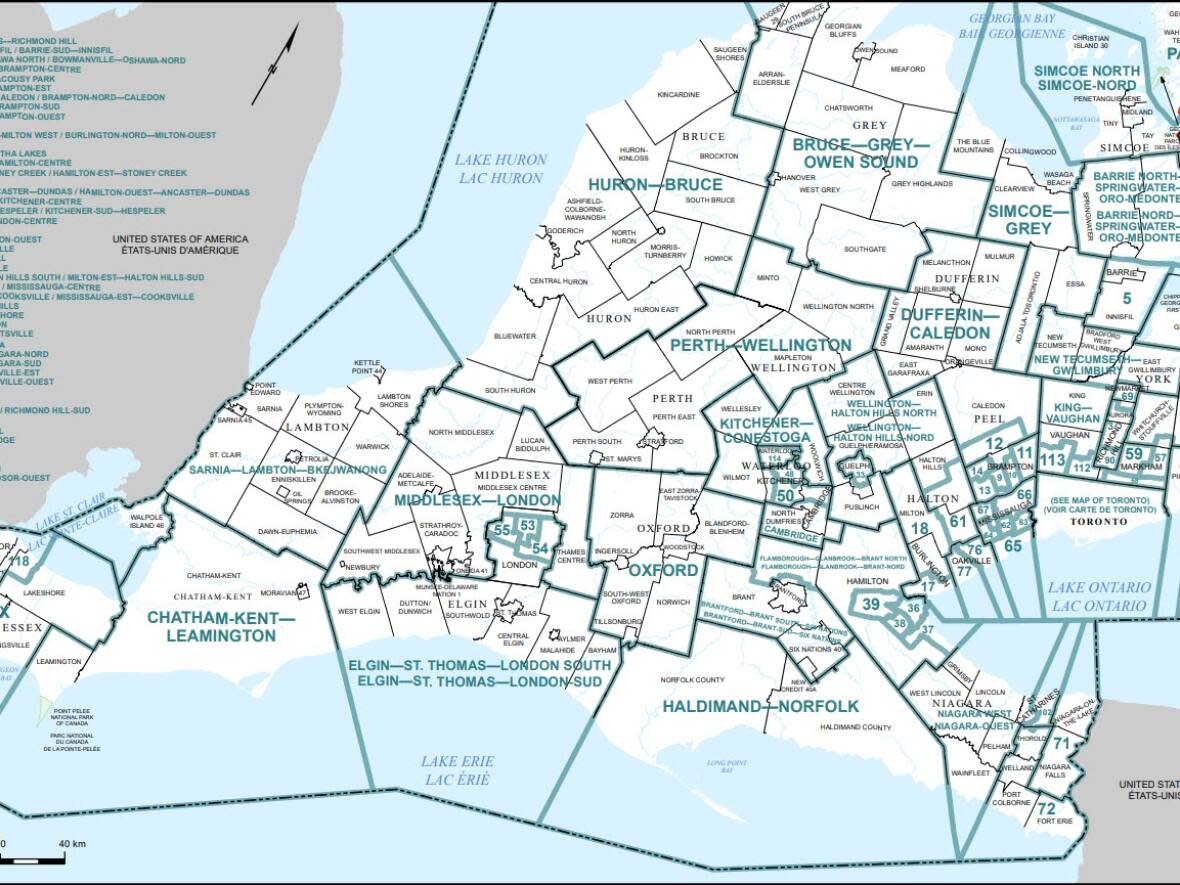Southwestern Ontario politicians mostly happy with riding boundary changes

The Federal Electoral Boundaries Commission went back to the drawing board and came up with changes to federal riding boundaries that are a lot more popular in southwestern Ontario.
The commission published a final report last Friday, which includes redrawn electoral maps for most of Ontario, and according to some politicians in Southwestern Ontario, the changes are for the better.
The first draft of the boundary proposal was released in August, and divided many municipalities and counties. The new ones undo that slicing and dicing, and bring some communities back together.
Windsor-Tecumseh MPP happy about Lakeshore, Ont. divide
The boundary map released last August had the southern part of Kingsville, Ont. in a riding with Leamington, while the northern section, including Cottam, Ont., was included in the Essex riding. The plan released last week has all of Kingsville in the Essex riding.
Eastern Lakeshore, including Lighthouse Cove, was still lumped in with Chatham-Kent's riding in the August draft, but falls under Essex in the this version.
The new report sticks with the LaSalle-Windsor boundary being the dividing line between Essex and Windsor West, instead of the proposed new boundary in the August draft, which had the westernmost part of the city in Essex.

Previously, the Oldcastle and Maidstone sections of Tecumseh would have been part of the Essex riding. Now, they would stay in Windsor-Tecumseh.
The one riding boundary that does cut through a municipality in the new report means that sections of Lakeshore on the west side of the Puce River would be in Windsor-Tecumseh.
Conservative MPP and former Tecumseh town councillor Andrew Dowie said he agrees with the decision, pointing out that this area already has Tecumseh postal codes.
"In Lakeshore, a lot of the residents absolutely see themselves being part of Tecumseh, so having the electoral district encompass this area that, for all intents and purposes, is a common community, it means that we're just stronger for it."
Sarnia-Lambton County consolidates into one riding
In Sarnia-Lambton, there are currently two ridings, Sarnia-Lambton and Lambton-Kent-Middlesex. The first proposal carved the region into three chunks, but the new plan is to put Sarnia-Lambton into one riding – Sarnia-Lambton-Bkejwanong, with Walpole Island included.
Kevin Marriott, warden of Lambton County, told CBC News he is surprised by the change, but thinks it's "some of the best news in a long time."
He said having one MP or MPP to represent the region will make it simpler for his constituents to access their representatives. Marriott said it would have been "a nightmare" to have three ridings in the region.
"Trying to approach the government on an issue and have to contact at least three different MP's or MPP's would have been a crazy amount of work," he said.
Chatham-Kent also becomes one riding
Chatham-Kent was previously split into two ridings – Lambton-Kent-Middlesex and Chatham-Kent-Leamington.
The draft suggested splitting the region into three ridings, with one of those ridings stretching all the way beyond London. The final boundary report will consolidate the two ridings into one riding that also includes Leamington.
Darrin Canniff, mayor of Chatham-Kent, said the change in boundaries will help eliminate voter confusion – but he also sees a downside in having one MP for the municipality, instead of the current two.
"You have less voices in Ottawa and Toronto, so there's pros and cons to both sides of it," he said.
The commission is headed by a judge appointed by Ontario's chief justice and two other members appointed by the Speaker of the House of Commons. For this year's report, the two other members are both political science professors.
Boundaries are redrawn every ten years to reflect changes in population across the province.
MPs have three months to raise objections to the latest report. The final recommendations will be approved in the fall, and will go into effect seven months later.
Provincially, the legislature must decide whether to follow the federal boundaries. Currently, most boundaries for provincial electoral districts are the same as the federal ones.


